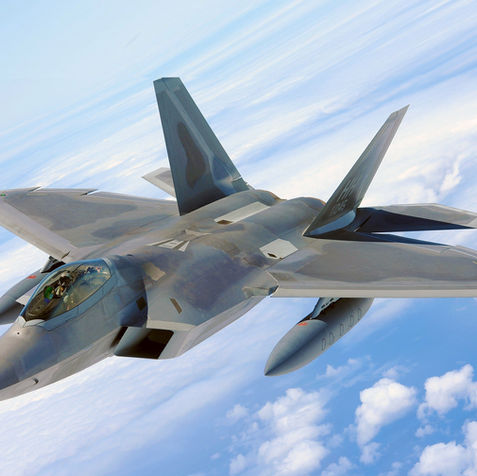
Hypersonics Research
Hypersonics in America.
Hypersonic refers to flight at speeds greater than Mach 5 (five times the speed of sound). In the United States our biggest puzzles include material sustainability (durability, heat resistance, etc.), propulsion technologies and system designs.
Regardless, of the subject, in order to understand the whole picture, we must consider history... where we started, what failed, and what works, and must importantly where we are going.
Historically, the first manufactured object to achieve hypersonic flight was the two-stage Bumper rocket, which reached speed of 5,150 mph in 1949. This project was led by a rocket jet. Then, one of the fastest pilot aircrafts, was the retired and Supersonic SR-71 Blackbird which reached approximately 3500 mph. This aircraft was developed during the 60's, led by a Pratt and Whiteny Turbojet and retired in 1998. One of the toughest hurdles in hypersonic during this era, and even still, is finding pilots that can withstand the "G-Force" without passing out or cognitive delays. Currently, with the NASA & Dryden (Armstrong) collaboration developed the unmanned X-43, which reaches the Mach 9.6 threshold. A scramjet makes this even possible. The different ability across all three stems from the design and to our interest engine type, a rocket engine, a scram jet engine, and turbojet engine with afterburner (the turbojet and scram jet being the most similar).
A turbojet engine has moving parts... those moving parts, propellor, take in as much air as possible, so when mixed with fuel and a spark, the combustion creates the force, enables thrust, which propels/forces the aircraft in the direction enabled. A scram jet engine has no moving parts there is merely an inlet (opening) to take in the air, with a cavity to inject fuel and a spark, to combust. Some designs introduce an inner "core" that directs and challenges the air in low and high pressures merely through design. The target speeds of these hypersonic+ aircrafts make scramjets ideal. When we consider a rocket engine, we've learned a few interesting tidbits that differ it from both a turbojet, and scram jet. Rocket engines typically rely on a liquid oxygen, additionally, for ignition fuel rockets usually use hydrogen. Something, that the majority of engines don't particularly gravitate towards... at least in active-duty flights. This has a lot to do with the safety factors involved, hydrogen being very light and highly combustible is a dangerous mix when uncontrolled.
Those who may remember the Hindenburg tale, before my time, yet notable. This was one of the first hydrogen aircrafts, and easily the largest. Once flames irrupted this aircraft quickly burned its way through. Ever since, hydrogen-based aircrafts have had a bad reputation, and a lot of skepticism in providing safe transport for the masses. Present day, hydrogen is still being explored as a fuel option in both aircraft and ground transport, but even still designers and engineers have far more safety regulations and hoops to jump... and if you ask me rightfully so.
An engine design place a very large role in hypersonic ability, that and a healthy thrust to weight ratio. It has taken some time for us to define and explore speeds and flight. Below, we have acknowledged the speed classification models that our industry refers too.
There are four preceding stages to hypersonic in flight and 2 to follow.
-
Subsonic
-
Mach: 0-0.8 < 614 mph
-
-
Transonic
-
Mach: 0.8-1.2 = 614 to 921 mph
-
-
Super Sonic
-
Mach: 1.2 -5 = 921 to 3,836 mph
-
-
Hypersonic
-
Mach: 5-10 = 3,836 to 7,673 mph
-
-
High Hypersonic
-
Mach: 10-25 = 7,673 to 19,180 mph
-
-
Re-entry
-
Mach: 25 or less = >19,180 mph
-
Power In Numbers
76
Years since our first Hyper Sonic lift.
3866
In additional mph reached across those last 76 years.
16
The # of companies (at least) invested in this research.
Project History
Jan 2024 - June 2025
Research Article Collection... We have compiled research articles from 2016 to present to capture current work and determine next paths forward.
Where do we take this knowledge? This is still being built.


